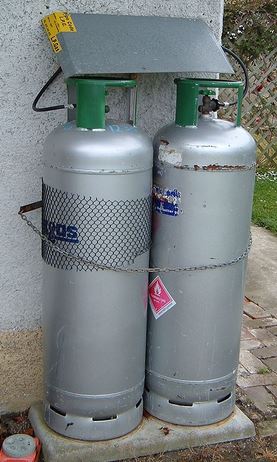Many people building a new house like cooking on gas, but may find that their area doesn’t have a mains supply.
The question then becomes “Should you go for bottled gas, or go all electric?”
Energy Cost
To compare energy costs you first need to understand how much energy there is in bottled gas.
- 45kg bottle of gas holds the equivalent of 611 kw hours
- 9kg bottle of gas holds the equivalent of 115 kw hours
Price
Current prices Victoria July 2015 are:
- 45kg is $114.00 – Equivalent to $0.18 per kw hour
- 9kg (Swap and Go) is $23.00 – Equivalent to $0.20 per kw hour
For the 45 kg bottles you would need to add rental for 2 bottles at around $40 each/year
With the 9kg bottles you need to consider the purchase price for the initial bottle, plus a couple of dollars for fuel every couple of months to swap bottles.
Efficiency
There is no star rating for cooktops, but I did find the following, typical, comparison figures on the Consumer Energy Center Website:
- Standard Gas Burner – 55%
- Standard Electric Hotplate – 65%
- Induction Element – 90%
The reason for the difference is that the standard cook tops radiate a sizable amount of heat into the air; while the induction element makes the bottom of the pan the heating element, putting more heat into the food.
Convenience
I much prefer cooking on gas to using a standard electric hotplate. (In case you are wondering I probably cook 75% of family meals and we rarely get takeaway food) . . .However people do tell me that induction element are pretty close to the ease of gas.
One issue with induction elements is they don’t work with aluminium or copper pans, just Stainless Steel and Cast Iron, so it might be time for some new pans!
Overall
If I was building in an area without mains gas I think I would go for an Induction Cooktop for the following reasons:
- Cost – When the additional costs are added to the base cost and with the lower efficiency the final cost is around around $0.35-$0.40. Electricity is going to be cheaper especially if you have got solar power.
- Simplicity – One bill for all fuel use and no need to bother about changing bottles.
